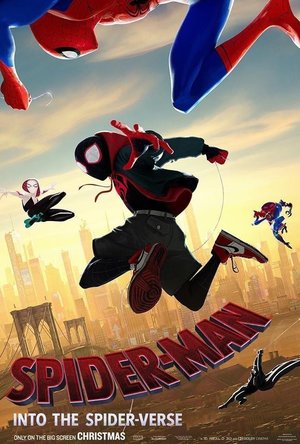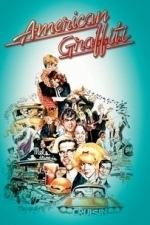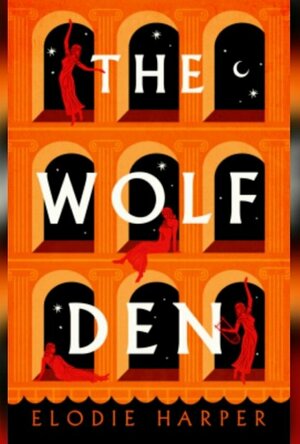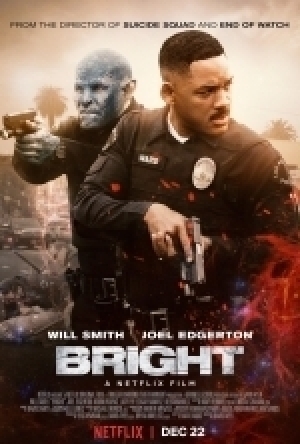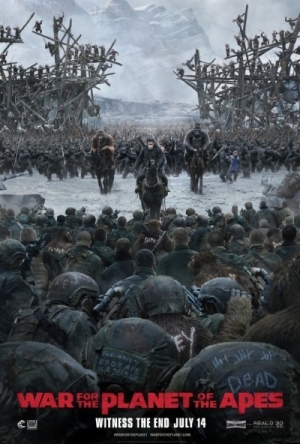Search
Gareth von Kallenbach (980 KP) rated Spider-Man: Into the Spider-Verse (2018) in Movies
Jul 2, 2019
This is the Spider-Man movie that we deserved.
It’s hard to believe that the movie I would end up saying that about would be an animated one. Nevertheless, I left the theater this time feeling a sense of warm satisfaction for the first time since Sony originally graced us with Tobey Maguire.
Spider-Ma n: Into the Spider-Verse is the most poignant statement that Sony could make about their recommitment to all things webslinger. The star-studded cast for this film includes Academy Award winners like Nicolas Cage and Mahershala Ali as well as the likes of Lily Tomlin, Chris Pine, and John Mulaney. But those aren’t even the main characters. Along with the stellar writing, an unbelievably well curated soundtrack and art direction that can only be described as sublime, Into the Spider-verse was exactly what we all needed right now.
This entry into the world of Spider-man actually brings us up to date with the comics by introducing us to Miles Morales (Shameik Moore), the black teenager from Brooklyn who has taken up the mantle of Spider-man following the death of Peter Parker (well, one of them). Witnessing Parker’s demise at the hands of The Kingpin, Morales promises to help destroy the weapon that killed him. Little does he realize that the weapon has opened a hole in the multiverse and multiple other spider men, women (and things) have been drawn through the rift into his universe. They all have to work together to get back to their own universes and to prevent the destruction of reality itself.
The soundtrack for this movie really brings Spider-man into modern times. Artists such as Kendrick Lamar, Eminem and Run the Jewels speak to the Brooklyn upbringing of Morales as the new webslinger. At the same time, it also serves up artists like Marshmello, Pendulum and Prodigy who demonstrate how action can be fueled through their EDM stylings. The music here is the most perfect complement to each part of the action and drama alike. Just as you will see multiple different Spider-men, you’ll be taken through a wide spectrum of musical stylings to match each hero.
The animation style displayed here really can’t be appropriately categorized. Part graffiti, part moving comic book and part CGI, the film brings together numerous different styles and effects such as cell-shading, anime breaks and word bubble subtitles to create something truly unique. The medium itself is perfect because we can finally see everything that a live-action film couldn’t execute. But unlike other animated superhero movies, this feature brings the artistic nature of illustrations to new levels. The mix of styles is unlike any cartoon you’ve ever seen (or are likely to see again). Beauty and realism combine to actually take you into a comic book instead of simply translating one for the screen.
The writing for Into the Spider-verse achieves something that few producers have managed to do in the animation field: it’s equally appealing to both children AND adults. These days it’s rare to see an animated superhero film being made for the big screen instead of going straight to television. As a result, Into the Spider-verse offers up plenty of quick witted and intelligent jokes for adults without crossing the lines of propriety. In addition to the quality humor, the story includes a number of emotional moments that all manage to evoke real feelings instead of coming off as just pandering. So, if you’re planning to take your children to this movie, you’ll certainly both enjoy it.
All-in-all, Into the Spider-Verse brings together all of the best elements in film-making and executes them to perfection. Writing, drawing, music all come together to create an experience that you have to see to believe. The only disappointing part here is that we had to wait 16 years for a Spider-Man movie this well done.
It’s hard to believe that the movie I would end up saying that about would be an animated one. Nevertheless, I left the theater this time feeling a sense of warm satisfaction for the first time since Sony originally graced us with Tobey Maguire.
Spider-Ma n: Into the Spider-Verse is the most poignant statement that Sony could make about their recommitment to all things webslinger. The star-studded cast for this film includes Academy Award winners like Nicolas Cage and Mahershala Ali as well as the likes of Lily Tomlin, Chris Pine, and John Mulaney. But those aren’t even the main characters. Along with the stellar writing, an unbelievably well curated soundtrack and art direction that can only be described as sublime, Into the Spider-verse was exactly what we all needed right now.
This entry into the world of Spider-man actually brings us up to date with the comics by introducing us to Miles Morales (Shameik Moore), the black teenager from Brooklyn who has taken up the mantle of Spider-man following the death of Peter Parker (well, one of them). Witnessing Parker’s demise at the hands of The Kingpin, Morales promises to help destroy the weapon that killed him. Little does he realize that the weapon has opened a hole in the multiverse and multiple other spider men, women (and things) have been drawn through the rift into his universe. They all have to work together to get back to their own universes and to prevent the destruction of reality itself.
The soundtrack for this movie really brings Spider-man into modern times. Artists such as Kendrick Lamar, Eminem and Run the Jewels speak to the Brooklyn upbringing of Morales as the new webslinger. At the same time, it also serves up artists like Marshmello, Pendulum and Prodigy who demonstrate how action can be fueled through their EDM stylings. The music here is the most perfect complement to each part of the action and drama alike. Just as you will see multiple different Spider-men, you’ll be taken through a wide spectrum of musical stylings to match each hero.
The animation style displayed here really can’t be appropriately categorized. Part graffiti, part moving comic book and part CGI, the film brings together numerous different styles and effects such as cell-shading, anime breaks and word bubble subtitles to create something truly unique. The medium itself is perfect because we can finally see everything that a live-action film couldn’t execute. But unlike other animated superhero movies, this feature brings the artistic nature of illustrations to new levels. The mix of styles is unlike any cartoon you’ve ever seen (or are likely to see again). Beauty and realism combine to actually take you into a comic book instead of simply translating one for the screen.
The writing for Into the Spider-verse achieves something that few producers have managed to do in the animation field: it’s equally appealing to both children AND adults. These days it’s rare to see an animated superhero film being made for the big screen instead of going straight to television. As a result, Into the Spider-verse offers up plenty of quick witted and intelligent jokes for adults without crossing the lines of propriety. In addition to the quality humor, the story includes a number of emotional moments that all manage to evoke real feelings instead of coming off as just pandering. So, if you’re planning to take your children to this movie, you’ll certainly both enjoy it.
All-in-all, Into the Spider-Verse brings together all of the best elements in film-making and executes them to perfection. Writing, drawing, music all come together to create an experience that you have to see to believe. The only disappointing part here is that we had to wait 16 years for a Spider-Man movie this well done.
Darren (1599 KP) rated American Graffiti (1973) in Movies
Nov 21, 2019
Thoughts on American Graffiti
Characters – Curt has always enjoyed his time on the strip, he knows everybody and is one of the most popular guys around, he was due to head of the college, but hasn’t made his mind up yet, despite it needing to be read for his next day, he ends up trying to spend his time chasing a mysterious woman around town all night. Steve has always planned his life out, he is going off to college and he is ready to make his relationship more open while they are separated, here he gets to learn about his relationship even if his best friend might not be joining him in college. John is the friend that has always been known for his ability with cars, he has a reputation around town with the police following him around and now he is starting to see the future where his friends are doing a lot more than him and gets stuck with a younger girl for the night, where he starts to see a brighter side to his future. Terry has always been the butt of most of the jokes between the friends, now he gets Steve’s car to look after he spends the night trying to find himself a woman and impress her with his lines.
Performances – When we look at the cast, Richard Dreyfuss is great through the film showing us a character that can get plenty of laughs and is quick on his feet. Ron Howard brings the character we know him for is always going to be easy for him to play. Paul Le Mat brings the typical bad boy to life that does show how he bought us a level of sympathy to the character. Charles Martin Smith brings the geeky sounding character out which become one of the most popular characters in these teen comedies for years to come.
Story – The story here follows four friends on the last day of summer before college is due to start, we see how the four have a different adventure on this night, which will help them discover what they want next in their lives. This is a story that shows just how difficult life is when you take the next step, leaving school is one of the first and biggest anybody will take, with the uncertainty being there for everybody involved, part of you will want to stay close to what you already had, while other sides of this will see you wanting to see what is next. This story mixes all of this together through the film with little effort and makes you believe these people could be real, while certain aspects will have dated here, with a new generation, back n the 1970s this would have been the idea of the house party in the 80s or 90s and wild adventure the modern youth would be having.
Comedy – The comedy in this film would be right up there with any teen comedies, it would have gotten more laughs for when it was released, rather than the ones you would expect to see now.
Settings – The film is set in one hang out location known as the strip, this will be the location where we get all the hang outs you would expect for teens in this generation.
Scene of the Movie – Terry’s attempts to get boozes.
That Moment That Annoyed Me – The world involved does seem to have dated.
Final Thoughts – This is a wonderful look at teenage life in the 70s it shows us just how close the friendships were, how hard the changes coming were and just what was left for the people in life.
Overall: Beautiful Look at the 70s.
Rating
Characters – Curt has always enjoyed his time on the strip, he knows everybody and is one of the most popular guys around, he was due to head of the college, but hasn’t made his mind up yet, despite it needing to be read for his next day, he ends up trying to spend his time chasing a mysterious woman around town all night. Steve has always planned his life out, he is going off to college and he is ready to make his relationship more open while they are separated, here he gets to learn about his relationship even if his best friend might not be joining him in college. John is the friend that has always been known for his ability with cars, he has a reputation around town with the police following him around and now he is starting to see the future where his friends are doing a lot more than him and gets stuck with a younger girl for the night, where he starts to see a brighter side to his future. Terry has always been the butt of most of the jokes between the friends, now he gets Steve’s car to look after he spends the night trying to find himself a woman and impress her with his lines.
Performances – When we look at the cast, Richard Dreyfuss is great through the film showing us a character that can get plenty of laughs and is quick on his feet. Ron Howard brings the character we know him for is always going to be easy for him to play. Paul Le Mat brings the typical bad boy to life that does show how he bought us a level of sympathy to the character. Charles Martin Smith brings the geeky sounding character out which become one of the most popular characters in these teen comedies for years to come.
Story – The story here follows four friends on the last day of summer before college is due to start, we see how the four have a different adventure on this night, which will help them discover what they want next in their lives. This is a story that shows just how difficult life is when you take the next step, leaving school is one of the first and biggest anybody will take, with the uncertainty being there for everybody involved, part of you will want to stay close to what you already had, while other sides of this will see you wanting to see what is next. This story mixes all of this together through the film with little effort and makes you believe these people could be real, while certain aspects will have dated here, with a new generation, back n the 1970s this would have been the idea of the house party in the 80s or 90s and wild adventure the modern youth would be having.
Comedy – The comedy in this film would be right up there with any teen comedies, it would have gotten more laughs for when it was released, rather than the ones you would expect to see now.
Settings – The film is set in one hang out location known as the strip, this will be the location where we get all the hang outs you would expect for teens in this generation.
Scene of the Movie – Terry’s attempts to get boozes.
That Moment That Annoyed Me – The world involved does seem to have dated.
Final Thoughts – This is a wonderful look at teenage life in the 70s it shows us just how close the friendships were, how hard the changes coming were and just what was left for the people in life.
Overall: Beautiful Look at the 70s.
Rating
Lottie disney bookworm (1056 KP) rated The Wolf Den in Books
Jun 17, 2021
(As you may expect from the subject matter of this book, I am highlighting trigger warnings of rape, sexual abuse, violence, slavery and suicide.)
“May I know love’s power, if never its sweetness.”
The Wolf Den is a magnifying glass into the world of Pompeii’s prostitutes: forgotten women who are owned and controlled by both men and society. This no-holds-barred novel follows Amara, a beautiful and educated doctor’s daughter who was enslaved after the death of her father and now is a she-wolf, a prostitute in Pompeii’s largest brothel, The Wolf Den.
Elodie Harper’s novel is told entirely from Amara’s perspective. This gives our main character a rare sense of power, the power to provide names to these previously nameless women and to make the reader care for these women, becoming entirely invested in their story. Alongside Amara; Dido, Victoria, Cressa, Beronice and Britannica experience violence, desperation, pain and loss but also highlight the power of friendship. This is not an easy read at all but Harper’s characters are so captivating it was impossible to put this book down.
Amara herself is such a complex character: she has an overwhelming amount of inner strength as she accepts her fate as a slave. At times this is heart-breaking when you gain glimpses of her previous life but accepting her fate does not mean Amara ever stops striving for freedom. She may have to change her idea of what happily ever after consists of but Amara will never stop working towards it, no matter the cost.
By no means is Amara perfect, there are definitely some questionable actions by our protagonist. However, Harper paints the she-wolves lives so acutely and tragically that the reader can never blame Amara: we don’t always agree with her actions but you can see that she has to protect herself because she literally has no one else to do it for her.
Amara is also clever, sometimes too clever for her owner Felix who is quick to punish her for speaking out of turn. However, once Amara proves that her previous education can be profitable, Felix is on board, taking Amara down a new path and raising the reader’s hopes of a happy outcome for our favourite she-wolf. This is a credit to the characterisation within this novel: that as the readers witness possible happy endings being ripped away, our sheer desperation increases with Amara’s.
Despite her fascinating characters, Elodie Harper does not rest on her laurels and completely immerses her readers in the landscape of Pompeii. From the filthy cobbled streets to the graffiti to the shops, inns and sellers in the forum, everything is described in the most magnificent historical detail.
Harper also entrenches her characters in the class system, whereby a customer of a higher social status is often a target but seemingly out of reach for the she-wolves: a lower class of man is easy to attract but can often be violent. And love? Well that is just a fantasy!
Initially I have to tell you that I was slightly disappointed by the ending of The Wolf Den: the chapters leading up to the finale were so emotional and action-packed that the final lines almost fell flat. HOWEVER, this was all turned on its head when I was told The Wolf Den is merely the first in a trilogy! Now that I know Amara will be back I am eager to see what else she has in store for us.
Thank you to Netgalley for the opportunity to read this e-ARC in exchange for an honest review.
“May I know love’s power, if never its sweetness.”
The Wolf Den is a magnifying glass into the world of Pompeii’s prostitutes: forgotten women who are owned and controlled by both men and society. This no-holds-barred novel follows Amara, a beautiful and educated doctor’s daughter who was enslaved after the death of her father and now is a she-wolf, a prostitute in Pompeii’s largest brothel, The Wolf Den.
Elodie Harper’s novel is told entirely from Amara’s perspective. This gives our main character a rare sense of power, the power to provide names to these previously nameless women and to make the reader care for these women, becoming entirely invested in their story. Alongside Amara; Dido, Victoria, Cressa, Beronice and Britannica experience violence, desperation, pain and loss but also highlight the power of friendship. This is not an easy read at all but Harper’s characters are so captivating it was impossible to put this book down.
Amara herself is such a complex character: she has an overwhelming amount of inner strength as she accepts her fate as a slave. At times this is heart-breaking when you gain glimpses of her previous life but accepting her fate does not mean Amara ever stops striving for freedom. She may have to change her idea of what happily ever after consists of but Amara will never stop working towards it, no matter the cost.
By no means is Amara perfect, there are definitely some questionable actions by our protagonist. However, Harper paints the she-wolves lives so acutely and tragically that the reader can never blame Amara: we don’t always agree with her actions but you can see that she has to protect herself because she literally has no one else to do it for her.
Amara is also clever, sometimes too clever for her owner Felix who is quick to punish her for speaking out of turn. However, once Amara proves that her previous education can be profitable, Felix is on board, taking Amara down a new path and raising the reader’s hopes of a happy outcome for our favourite she-wolf. This is a credit to the characterisation within this novel: that as the readers witness possible happy endings being ripped away, our sheer desperation increases with Amara’s.
Despite her fascinating characters, Elodie Harper does not rest on her laurels and completely immerses her readers in the landscape of Pompeii. From the filthy cobbled streets to the graffiti to the shops, inns and sellers in the forum, everything is described in the most magnificent historical detail.
Harper also entrenches her characters in the class system, whereby a customer of a higher social status is often a target but seemingly out of reach for the she-wolves: a lower class of man is easy to attract but can often be violent. And love? Well that is just a fantasy!
Initially I have to tell you that I was slightly disappointed by the ending of The Wolf Den: the chapters leading up to the finale were so emotional and action-packed that the final lines almost fell flat. HOWEVER, this was all turned on its head when I was told The Wolf Den is merely the first in a trilogy! Now that I know Amara will be back I am eager to see what else she has in store for us.
Thank you to Netgalley for the opportunity to read this e-ARC in exchange for an honest review.

Kappboom - Cool Wallpapers & Background Wallpapers
Photo & Video and Social Networking
App
The #1 Ranked and Best Wallpapers app with over 200,000 beautiful and cool wallpapers at your...

PhotoGrid - Pic & Video Editor
Photo & Video and Lifestyle
App
A must-have free photo editor app for photography fanatics and Instagram users! It's packed with...
DiscoStu (6 KP) rated Bright (2017) in Movies
Jan 8, 2018 (Updated Jan 8, 2018)
“A competent buddy cop movie that offers solid pacing and character portrayals at the expense of building up the films (admittedly) interesting universe”.
Contains spoilers, click to show
Netflix’s ‘Bright’, directed by David Ayer (Suicide Squad) and starring Will Smith and Joel Edgerton, brings the big budget box office trappings of a fully fledged cinema release to their home streaming subscription service and arguably the end result is a fun and enjoyable, if slightly flawed, buddy-cop-movie-with-a-twist that sets up a universe you’ll likely want to see more of.
Smith plays Daryl Ward, a weary veteran L.A. cop reluctantly partnered with orc partner Nick, the first and only orc to make the force in this alternate earth story. The film opens with Ward taking a round of buckshot from an orc thug whilst Nick looks on waiting for a burrito from a street vendor. The incident leaves a distrust between Ward and Nick, with Ward unsure whether his partner really has his back after Nick not only failed to step up and prevent the shooting but also failed to apprehend the orc perpetrator during the ensuing foot chase. Ward also finds himself at odds with other members of the force who don’t share the police’s ‘progressive’ attitudes of allowing orcs into the force.
The film briefly touches on a two thousand year old conflict between the nine armies and the Dark Lord who was defeated when various races allied to defeat him. In the established lore the orcs allied with the Dark Lord and have been subjugated ever since. The film attempts to portray the orcs through a social commentary that reflects the black community today and how heavy handed the film tackles the subject will probably depend on the viewer. For me it was handled sensitively enough without being too in your face.
The film sees the two protagonists dispatched to a disturbance that quickly escalates to a situation that goes from bad to worse. Finding themselves on the run with a Bright, the film’s titular white haired magic wielders, and a coveted magic wand Ward and Nick have to navigate hostile L.A. gang land environments whilst pursued by Inferni (the magic version of the Illuminati), the police and human and orc gangsters, all who have their own plans for the wand.
The film is shot well, with plenty of scenery that builds up the shared world of humans, orcs, elves , centaurs and the other races that we don’t get to spend any time with. A montage at the start of the film shows various L.A. scenery graffiti tagged with striking imagery depicting the struggle of orcs in an oppressed landscape. Evidently, orc lives matter. The film also doesn’t struggle for pacing. The two hour runtime services the story well enough, even if some of the world building and character exploration suffers as a result. I would have liked to have spent more time exploring the shared history of the various races and understanding the motivations of the stories’ villains but sadly these elements are undersold in favour of a shorter runtime that hurries the narrative along. To the credit of the writers and the director this world bares revisiting and at the time of writing it sounds like Netflix know this too with a sequel already greenlit.
Bright is a fun jaunt in a world I’d like to get to know better. Smith and Edgerton are strong leads who share a strong chemistry and make you care about their characters. The bad guys don’t fare as well here, especially disappointing given that Noomi Rapace is the lead antagonist but hopefully a sequel will correct some of these missteps. Bright feels like a £20 cinema ticket movie and gives enough to the viewer that you’ll want to discuss it with friends afterwards. As a film bundled with your Netflix subscription it’s hard to be too critical.
Smith plays Daryl Ward, a weary veteran L.A. cop reluctantly partnered with orc partner Nick, the first and only orc to make the force in this alternate earth story. The film opens with Ward taking a round of buckshot from an orc thug whilst Nick looks on waiting for a burrito from a street vendor. The incident leaves a distrust between Ward and Nick, with Ward unsure whether his partner really has his back after Nick not only failed to step up and prevent the shooting but also failed to apprehend the orc perpetrator during the ensuing foot chase. Ward also finds himself at odds with other members of the force who don’t share the police’s ‘progressive’ attitudes of allowing orcs into the force.
The film briefly touches on a two thousand year old conflict between the nine armies and the Dark Lord who was defeated when various races allied to defeat him. In the established lore the orcs allied with the Dark Lord and have been subjugated ever since. The film attempts to portray the orcs through a social commentary that reflects the black community today and how heavy handed the film tackles the subject will probably depend on the viewer. For me it was handled sensitively enough without being too in your face.
The film sees the two protagonists dispatched to a disturbance that quickly escalates to a situation that goes from bad to worse. Finding themselves on the run with a Bright, the film’s titular white haired magic wielders, and a coveted magic wand Ward and Nick have to navigate hostile L.A. gang land environments whilst pursued by Inferni (the magic version of the Illuminati), the police and human and orc gangsters, all who have their own plans for the wand.
The film is shot well, with plenty of scenery that builds up the shared world of humans, orcs, elves , centaurs and the other races that we don’t get to spend any time with. A montage at the start of the film shows various L.A. scenery graffiti tagged with striking imagery depicting the struggle of orcs in an oppressed landscape. Evidently, orc lives matter. The film also doesn’t struggle for pacing. The two hour runtime services the story well enough, even if some of the world building and character exploration suffers as a result. I would have liked to have spent more time exploring the shared history of the various races and understanding the motivations of the stories’ villains but sadly these elements are undersold in favour of a shorter runtime that hurries the narrative along. To the credit of the writers and the director this world bares revisiting and at the time of writing it sounds like Netflix know this too with a sequel already greenlit.
Bright is a fun jaunt in a world I’d like to get to know better. Smith and Edgerton are strong leads who share a strong chemistry and make you care about their characters. The bad guys don’t fare as well here, especially disappointing given that Noomi Rapace is the lead antagonist but hopefully a sequel will correct some of these missteps. Bright feels like a £20 cinema ticket movie and gives enough to the viewer that you’ll want to discuss it with friends afterwards. As a film bundled with your Netflix subscription it’s hard to be too critical.
Bob Mann (459 KP) rated War for the Planet of the Apes (2017) in Movies
Sep 29, 2021
Putting the “ape” in “The Great Esc-ape”.
2011’s “Rise of the Planet of the Apes” was the one of the big movie surprises for me of that year. With staggeringly good mo-cap for the apes and a touching and memorable story it was (or would have been) a 5-Fad classic. 2014’s “Dawn of the Planet of the Apes” whilst also good took a slight backward step. With “War”, the form is back almost to top notch, and this is a summer release at last deserving of the suffix “blockbuster”.
We have moved a number of years forwards from the events of “Dawn” and society as we know it has crumbled away still further: even the “Holidays are Coming” Coke lorry is no longer in service, so things MUST be bad! We begin the film with the apes having a nice ‘Centre Parcs’ break when their reverie and cappuccinos are rudely interrupted by the attacking forces of “The Colonel” (Woody Harrelson, “Triple 9“, “Zombieland”). For The Colonel is intent on tracking down and killing ape-leader Caesar (Andy Serkis, “LOTR”).
After things get decidedly personal, Caesar leaves his young son Cornelius (in a nice nod to the Roddy McDowell role in the original films) to find and kill The Colonel. So follows a “True Grit” style pursuit/revenge chase, made more similar to this analogy by the picking up of a waif-like mute girl (the excellent Amiah Miller). I found this to be a really emotional plot line, with Caesar torn between the animal drive of his revenge and his role as a leader to his whole community.
The film analogies continue as we take in a “Shining”-style winter hotel; a gritty Prisoner-of-War camp escape drama (“The Great Esc-ape”?); a barricades battle in the style of Helm’s Deep in “LOTR: The Two Towers”; and a full-on Coppola-style helicopter-based war sequence (“Ape-ocalypse now”, as graffiti in the film declares).
Once again, the mo-cap ability to express true emotions on the faces of the apes is mind-blowing, with Serkis again being outstanding as is Steve Zahn (“Dallas Buyer’s Club“) adding some (very funny) comic relief as “Bad Ape”.
While Woody Harrelson is not everyone’s cup of tea (including mine), here I found him to be actually very good (“SO EMOTIONAL”!) as the half crazed dictator forcing beings he sees as less worthy than his kind to build a wall. (That’s just SO familiar… think dammit… think….!). There’s a really cool plot twist in The Colonel’s character arc that I really didn’t see coming. Just so cool.
Another star of the film for me was Michael Giacchino’s music which is simply awesome. Starting with a superbly retro rendition of the 20th Century Fox theme (not top of my list: “The Simpson’s Movie” still holds that spot for me!) Giacchino decorates every scene with great themes and like all great film music some of it you barely notice. A dramatic telling by the Colonel of his back-story is accompanied by sonorous music that is similar in its power to James Horner’s classic “Electronic Battlefield” in “Patriot Games”: only when the scene finishes and the music stops do you appreciate how central it was to the emotion of the scene. (As I sat through all of the end-titles for the music I can also confirm that – despite all the odds – there is no “monkey” at the end!)
The script by “Dawn” collaborators Mark Bomback and (director) Matt Reeves is eventful and packs a dramatic punch particularly in the last half of the film. The talented Mr Reeves (who also directed “Cloverfield” and “Let Me In” and is in assigned to the next Ben Affleck outing as “The Batman”) directs with panache, never letting the foot come off the tension pedal.
On the downside, that “last half of the film” is still 70 minutes away, and whilst I appreciate a leisurely pace for properly setting characters and motivations in place, getting to those simply brilliant scenes set at “the border” is a bit of a slog that might have been tightened up and moved along a bit quicker. Also, while talking about editing, I would have personally ended the film about 90 seconds before they did.
I saw this in 3D, but the effects are subtle at best (although there is a nice binocular rangefinder view). In my opinion it’s not worth going out of your way to experience in 3D.
But overall I loved this movie. The film is chock full of visual delights for film lovers (one of my favourites being “Bedtime for Bonzo” – a nice historical film reference – written on the back of a soldier’s helmet). It’s an epic action film with a strong emotional core to the story that genuinely moved me. There may be other spin-off Planet of the Apes films to follow. But if they left this here, as a near-perfect trilogy, that would be absolutely fine by me.
We have moved a number of years forwards from the events of “Dawn” and society as we know it has crumbled away still further: even the “Holidays are Coming” Coke lorry is no longer in service, so things MUST be bad! We begin the film with the apes having a nice ‘Centre Parcs’ break when their reverie and cappuccinos are rudely interrupted by the attacking forces of “The Colonel” (Woody Harrelson, “Triple 9“, “Zombieland”). For The Colonel is intent on tracking down and killing ape-leader Caesar (Andy Serkis, “LOTR”).
After things get decidedly personal, Caesar leaves his young son Cornelius (in a nice nod to the Roddy McDowell role in the original films) to find and kill The Colonel. So follows a “True Grit” style pursuit/revenge chase, made more similar to this analogy by the picking up of a waif-like mute girl (the excellent Amiah Miller). I found this to be a really emotional plot line, with Caesar torn between the animal drive of his revenge and his role as a leader to his whole community.
The film analogies continue as we take in a “Shining”-style winter hotel; a gritty Prisoner-of-War camp escape drama (“The Great Esc-ape”?); a barricades battle in the style of Helm’s Deep in “LOTR: The Two Towers”; and a full-on Coppola-style helicopter-based war sequence (“Ape-ocalypse now”, as graffiti in the film declares).
Once again, the mo-cap ability to express true emotions on the faces of the apes is mind-blowing, with Serkis again being outstanding as is Steve Zahn (“Dallas Buyer’s Club“) adding some (very funny) comic relief as “Bad Ape”.
While Woody Harrelson is not everyone’s cup of tea (including mine), here I found him to be actually very good (“SO EMOTIONAL”!) as the half crazed dictator forcing beings he sees as less worthy than his kind to build a wall. (That’s just SO familiar… think dammit… think….!). There’s a really cool plot twist in The Colonel’s character arc that I really didn’t see coming. Just so cool.
Another star of the film for me was Michael Giacchino’s music which is simply awesome. Starting with a superbly retro rendition of the 20th Century Fox theme (not top of my list: “The Simpson’s Movie” still holds that spot for me!) Giacchino decorates every scene with great themes and like all great film music some of it you barely notice. A dramatic telling by the Colonel of his back-story is accompanied by sonorous music that is similar in its power to James Horner’s classic “Electronic Battlefield” in “Patriot Games”: only when the scene finishes and the music stops do you appreciate how central it was to the emotion of the scene. (As I sat through all of the end-titles for the music I can also confirm that – despite all the odds – there is no “monkey” at the end!)
The script by “Dawn” collaborators Mark Bomback and (director) Matt Reeves is eventful and packs a dramatic punch particularly in the last half of the film. The talented Mr Reeves (who also directed “Cloverfield” and “Let Me In” and is in assigned to the next Ben Affleck outing as “The Batman”) directs with panache, never letting the foot come off the tension pedal.
On the downside, that “last half of the film” is still 70 minutes away, and whilst I appreciate a leisurely pace for properly setting characters and motivations in place, getting to those simply brilliant scenes set at “the border” is a bit of a slog that might have been tightened up and moved along a bit quicker. Also, while talking about editing, I would have personally ended the film about 90 seconds before they did.
I saw this in 3D, but the effects are subtle at best (although there is a nice binocular rangefinder view). In my opinion it’s not worth going out of your way to experience in 3D.
But overall I loved this movie. The film is chock full of visual delights for film lovers (one of my favourites being “Bedtime for Bonzo” – a nice historical film reference – written on the back of a soldier’s helmet). It’s an epic action film with a strong emotional core to the story that genuinely moved me. There may be other spin-off Planet of the Apes films to follow. But if they left this here, as a near-perfect trilogy, that would be absolutely fine by me.
